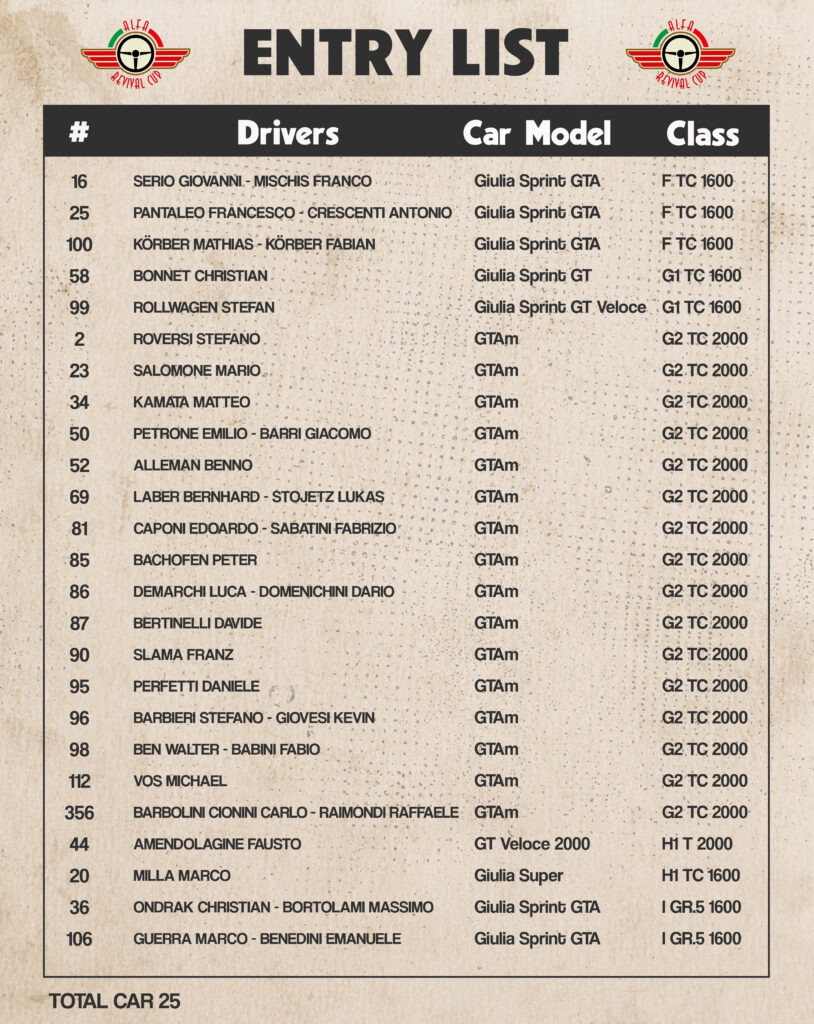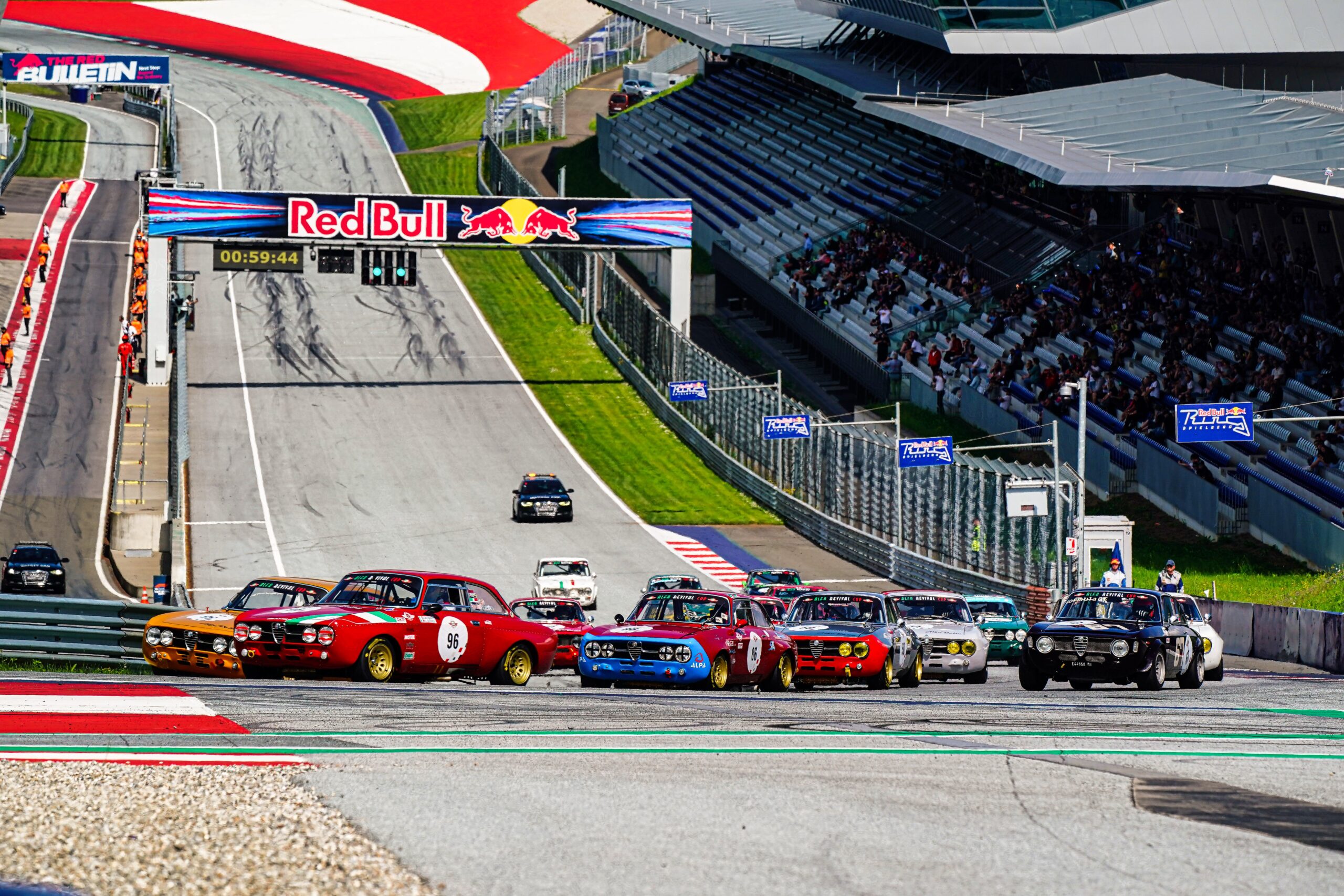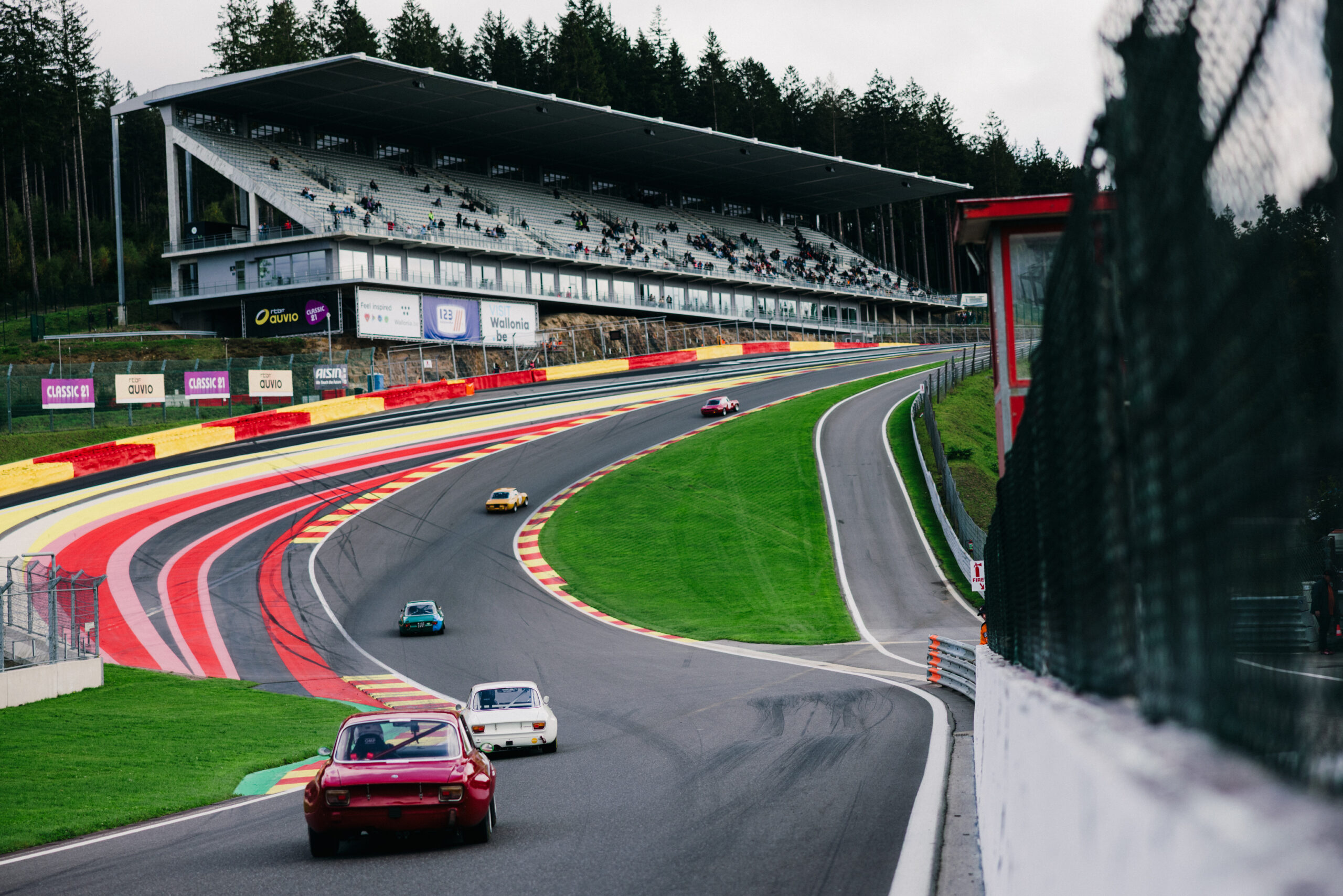June 6, 2024: The Red Bull Ring grid is hosting a large number of wonderful Alfa Romeos: as many as 25! Quality and quantity, given the presence of numerous GTAm and Giulia Sprint GTA models, joined by some Giulia Sprint GTA, Sprint GT and Sprint GT Veloce, a GT Veloce 2000 and a Giulia Super. All at the top in terms of preparation, performance and aesthetics.
After introducing the cars, let us now take a look at those who will have the burden and honour of pushing them to the limit. Most of the competitors at the starting grid (17 out of 25) have already taken part in the 2024 season, competing in the opening round at Vallelunga.
New protagonists are also on the scene in Austria:
- Christian Bonnet, from Switzerland, with the Scuderia del Grifone and the Giulia Sprint GT number 58
- The German Stefan Rollwagen of OKP Alfa delta Racing Team with the number 99 Giulia Sprint GT Veloce
- Benno Alleman, from Switzerland, with his GTAm no. 52
- Dario Domenichini, member of the Jolly Car Squadra Corse team, sits alongside Luca Demarchi, at the wheel of the GTAm number 86
- Fabio Babini from Faenza, GT driver with Porsche and Lamborghini, joins Scuderia Clemente Biondetti together with Walter Ben at the wheel of the GTAm no. 98
Embarking on their first race of the season, but already competitors in past years, the Körber father-and-son duo, Mathias and Fabian, are in the OKP Alfa Delta Racing Team’s Giulia Sprint GTA number 100. Stefano Roversi is competing with the Scuderia Bologna Corse’s GTAm number 2, while Franz Slama in the GTAm number 90, and finally the above-mentioned Walter Ben. Emilio Petrone, Bernhard Laber, Peter Bachofen and Carlo Cionini Barbolini have chosen to fully experience the thrill of the Alfa Revival Cup by securing their participation in all six rounds of the season.
Among the drivers are also Modena Cento Ore participants such as Christian Ondrak, Bernhard Laber, Benno Alleman and Christian Bonnet, loyal to the Canossa motor racing organisation team. In 2023, Daniele Perfetti took the lead, after a long chase over Praller and Körber. Who will win this year? Will Perfetti be able to repeat the victory at the Ring, improving on Vallelunga’s excellent second place?
From its origins to the present day: a land of racing
Some of us may remember it as ‘Österreichring’ or ‘Zeltweg’, a demanding and extremely fast circuit that witnessed one of the most spectacular periods in Formula 1, from 1970 to 1987. The Red Bull Ring has a complex history, with at least three crucial evolutions, which have led it to become one of the temples of international motorsport today.
The original track, laid out in 1969 to replace the military aerodrome, lasted until the late 1980s, when the top series left Austria temporarily, only to return in 1997. The track has since changed its name and layout, while also opening up to two-wheelers with the Superbike and MotoGP championships. Renovation work has slowed down the race track, profoundly modified some sections and made the circuit, now called A1-Ring, safer. F1 was raced here until 2003, whereafter another period of oblivion began.
In 2004 the facility was bought by Red Bull, which started a major renewal crowned in 2011 with the return of the DTM. Since 2014, it has been on the Formula 1 calendar, with 35 Austrian Grand Prix being held here to date. The absolute record of 1’02‘’939 belongs to Valtteri Bottas in a Mercedes-AMG F1 W11 EQ Performance during qualifying for the 2020 edition. In 2016, the Red Bull Ring also rejoined the MotoGP.
A closer look at the circuit: bends, inclines, braking points
The Red Bull Ring is one of the shortest tracks (4,318 metres), with the fewest corners (only 10), and the shortest straights (none over 1,000 metres) among those homologated ‘grade 1’ by the FIA. The layout is simple, fast, but treacherous.
Drivers tackle Turns 2, 5 and 8 at full throttle, while between Turns 1 and 4 there are major gradient variations, with peaks of 12%. From Turns 1 to 3, the track ascends to the apex of the latter, where a slight descent begins, which then becomes steeper when approaching Turn 4. Only the two consecutive corners in the middle sector are left-handed: a further challenge for the tyres, which reach different wear and temperatures on the two sides of the car. What is needed is good mechanical grip at low speeds (turns 1, 3 and 4), excellent performance at high speeds (turns 6-7 and 9-10) and brakes with plenty of bite.
The height difference between the lowest and highest point (69 metres) is one of the most significant in the panorama of international circuits, unsurprising given the location in the heart of the Austrian Alps, 660 metres above sea level. The kerbs, especially those in Turns 1, 6 and 7, are aggressive and pronounced: a test bench for suspensions. The homage to two Austrian Formula 1 heroes is worthy of mention: Turn 1 is named after Niki Lauda, three times world champion in 1975, 1977 and 1984, while Turn 9 is dedicated to Jochen Rindt, the only driver to receive the world title after his death in 1970 at Monza.
Red Bull Ring Classics: the triumph of historic motoring
The protagonists of this weekend are the cars that have written indelible pages of sporting history, such as our Alfa Romeo touring cars, which dominated speed, hill-climb and endurance races around the world between the 1960s and 1970s. We like to call them ‘driving universities’ for hundreds of drivers. Red Bull Ring Classics is an international showcase in which Alfa Revival Cup represents the tradition, culture, style and technique of the Alfa Romeo models that made Italy great in the racing world.




